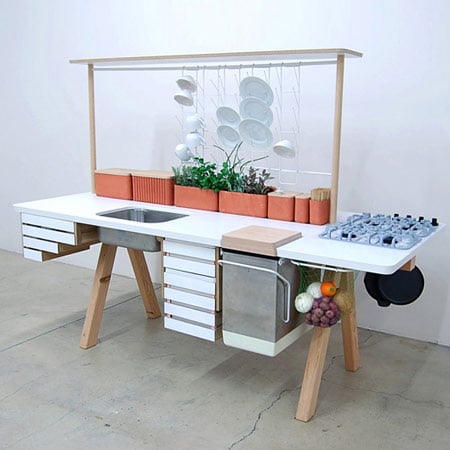
Flow2 kitchen by Studio Gorm
Oregon designers John Arndt and Wonhee Jeong of Studio Gorm have designed a kitchen where waste products are used to grow plants.
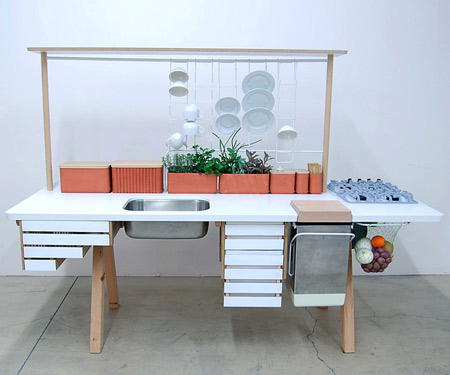
Drying dishes drip onto plants in terracotta containers.
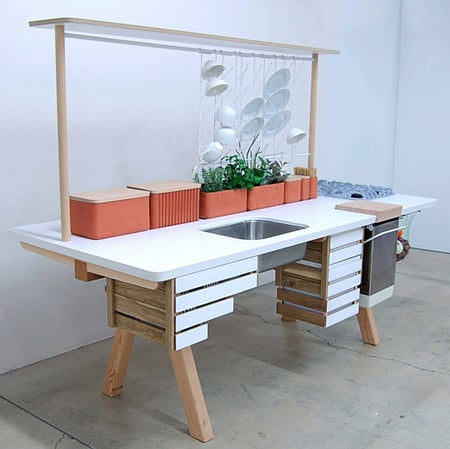
Food scraps are broken down by worms and the resulting fertiliser used is for the plants.
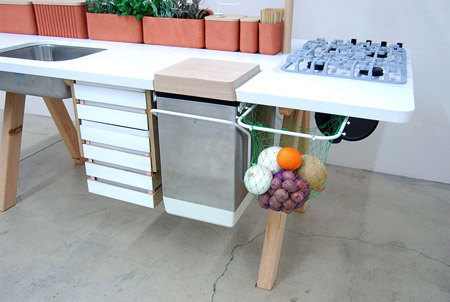
A double-walled terracotta container acts as a refrigerator, cooling the inside as water evaporates through the outer wall.
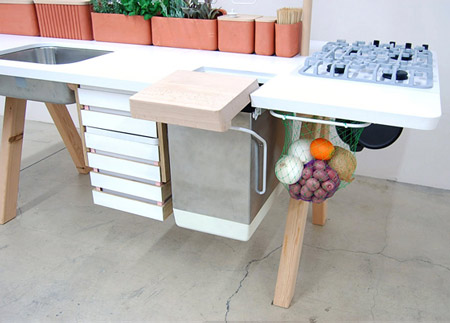
The project is on show as part of and exhibition called Call and Rersponse at the Museum of Contemporary Craftin Oregon until 31 October.
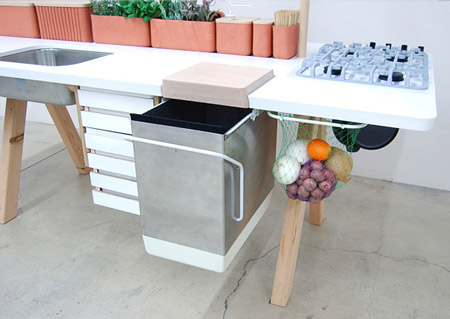
Photographs are by Wonhee Jeong and John Arndt.
See also:
Vaisselier Système D by Matière A
Colo dishwasher by Peter Schwartz and Helene Steiner
Ethical Kitchen by Alexandra Sten Jørgensen
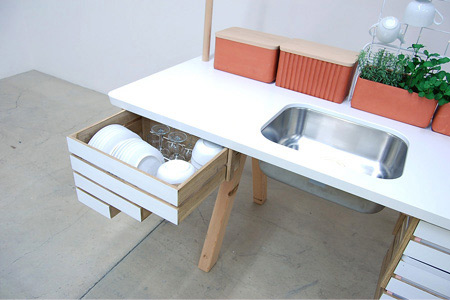
Here's some more information from Studio Gorm:
--
Flow2
Oregon based studio Gorm (John Arndt and Wonhee Jeong) has designed a new version of their kitchen, flow and the kitchen of terrestrial mechanics.
Flow is a living kitchen where nature and technology are integrated in a symbiotic relationship, processes flow into one another in a natural cycle, efficiently utilizing energy, waste, water and other natural resources. It provides a space not only for preparing food but an environment that gives a better understanding of how natural processes work. A kitchen where food is grown, stored, cooked and composted to grow more food.
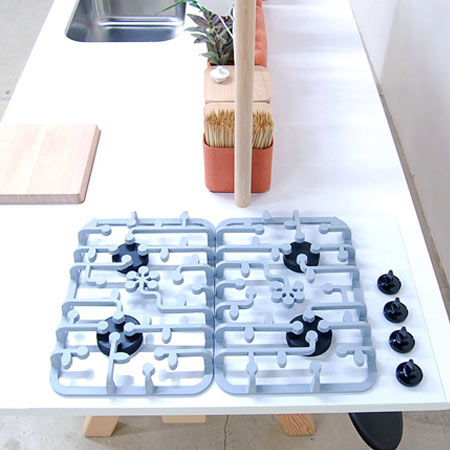
The flow products can be used independently but are far more effective when they work in concert as part of the larger system. The individual objects are relatively uncomplicated, acting as simple vehicles for the more complex natural processes to do the work. This kitchen is developed as a flexible system where resources are reused by several elements creating a dynamic flow between the products. The flow kitchen focuses on three major problem areas in the kitchen Waste, Water and Energy.
The hanging dish rack offers vertical storage for drying dishes saving valuable counter space, water from the dish rack drips on the herbs and edible plants, which are grown in the planter boxes positioned below the rack.
The refrigerator is one of the largest consumers of electricity in the home. The majority of the items we refrigerate do not need to be kept as cold as a standard fridge temperatures. The evaporative cooling fridge box keeps food cool through evapo-transpiration. The space between the double walls is filled with water which slowly seeps through the outer wall and evaporates, causing the inside temperature to cool. It is deal for storing vegetables, fruit, eggs, cheese and butter. The evaporative cooling fridge reduces the need for a larger conventional fridge.
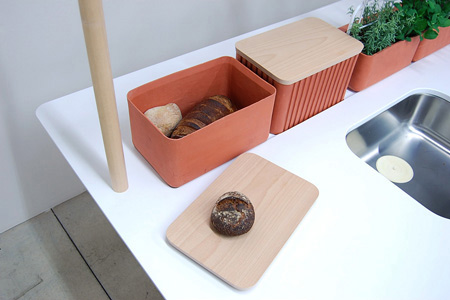
The Storage jars are made from unglazed earthenware with beech wood lids. They utilize the natural porous properties of earthenware, which creates an ideal environment for maintaining the consistency of bread, extending the life of garlic and onions, storing grains and growing herbs. The beech wood lids which have natural anti microbial properties can also be used as cutting boards or serving trays.
Up to 40% of household waste can be composted. The integrated cutting board can be slid forward allowing scraps to be swept into the composting bin. Kitchen scraps, newspaper, junk mail and paper scraps can be added to the vermicomposter. Worms breakdown food and turn it into worm castings, a nutrient rich fertilizer (about 2 weeks start to finish). By pulling the handle finished castings are sifted into the collection tray where they can be dried out until needed. The fertilizer can be used in the herb boxes, added to houseplants or the garden.
The dish and utensil drawer provides the necessary space for storing plates bowls cups and cutlery in an economic and easy to access format.
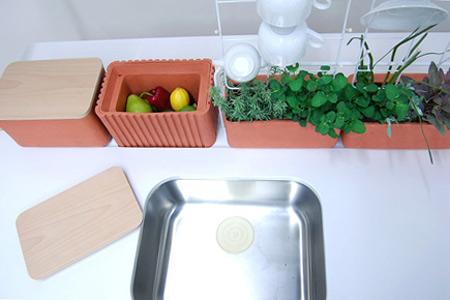
Small trash and recycling bins.
The bag rack is used to hang net market bags, these can be used to hold onions potatoes or produce form the market. The rack can also be used to hang most any other type of shopping bag.
The gas cook top is made up of a floral pattern, offering an alternative to the conventional standards. The continuous surface allows pots to be easily moved on and off the heat source.
Flow2 is on display at the Museum of Contemporary Craft as part of the Exhibition Call and Response. The show will be up until October 31.